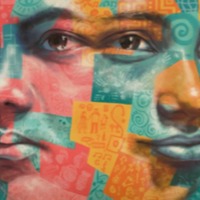
Naganna
While bonded labour has been outlawed for decades, survey data and pre-existing research confirms that this practice still persists. Bonded labour is not only illegal, research confirms that it has serious negative health impacts for those affected, who typically work in unsanitary and dangerous working conditions with no access to health care. Naganna was 10 years old when he started working as a bonded labourer, inheriting his grandfather’s debt. Naganna was forced to work long hours without rest and subjected to physical violence. It was with the help of Jeevika charity that Naganna was able to escape his situation and is now working with the charity.
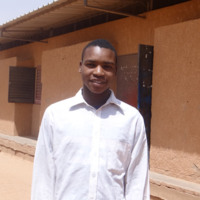
Adamou
Niger is a source, transit, and destination country for men, women, and children subjected to forced labour and sex trafficking. Caste-based slavery practices continue primarily in the northern part of the country and affect some 44,000 people. Victims from Benin, Burkina Faso, Cameroon, Ghana, Mali, Nigeria, and Togo are exploited in sex and labour trafficking in Niger. Nigerien boys are subjected to forced labour, including forced begging, within the country. Corrupt marabouts or loosely organized clandestine networks may also place Nigerien girls into domestic servitude or commercial sex. Nigerien children are subjected to forced labour in gold, salt, trona, and gypsum mines; agriculture; stone quarries; and manufacturing within the country. Girls are subjected to sex trafficking along the border with Nigeria, sometimes with the complicity of their families Abdullah and his family lived under the control of their masters in descent based slavery until they settled in a village founded by Anti-Slavery International around its school project in Niger. As a result of this project, Abdullah is now able to go to school.

Manon
Mica is a mineral that provides the sparkling effect in cosmetics and car bodypaint. The mica mining area of Jharkhand/Bihar in India comprises an estimated 300 rural villages, and child labour occurs in these remote villages, including collecting/mining mica and cobbing (hammering minerals other than mica from the mined rocks. It is estimated that approximately 20,000 children are currently working in the mica mines in India, with 90% of these working under illegal conditions of modern slavery. Manon was trafficked from Nepal to India at the age of 6 years old to work in the Mica mine. Forced to work in dangerous conditions, and to watch his best friend die, Manon was finally rescued two and a half years later.
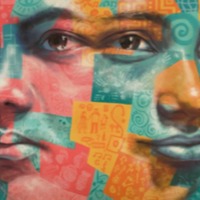
Ruhi
Entire families migrate every year from other states in India to find work in Punjab’s brick kilns. The survey data suggest that there are more than 18 million people or 1.4 percent of the total population, who are living in conditions of modern slavery in India. Industries implicated in survey data include domestic work, the construction and sex industries, agriculture, fishing, manufacturing, manual labour, and forced begging. Most of India’s slavery problem is internal, and those from the most disadvantaged social strata—lowest caste Dalits, members of tribal communities, religious minorities, and women and girls from excluded groups—are most vulnerable. Ruhi tells of how poverty, a lack of job opportunities and healthcare needs in Uttar Pradesh led her family to borrow money, and accept work from a broker of a brick kiln factory under the promise of Rs.8000 monthly, overtime pay and an advance. However, once her husband travelled to Silchar, her family was abused and the promises went unfulfilled.
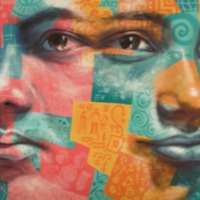
Mohammed
It is estimated that there are over 2 million people are living in conditions of modern slavery in Pakistan. Debt bondage constitutes the most prevalent form of slavery, being found in industries such as brick making, agriculture, carpet weaving and fishing. Brick-kilns are located on the outskirts of most major towns and cities in Pakistan and operate almost exclusively on the basis of debt bondage. Male heads of families receive advances which bond them and their entire families to owners of brick-kilns. Once bonded, the laborers are forced to live and work at the brick-kiln site. While all members of the family are expected to work, the minimal wages paid are given only to the male head of the family. The pay structure is such that basic necessities are not covered by the wages, forcing workers to take out further loans and increase their debt. Mohammed and his family were searching for a source of income when they found work in a brick kiln. Though they did not take an advance, Mohammed was forced to take out a loan with the kiln owners in order to pay for expenses, leading him and his family to be trapped in debt bondage.
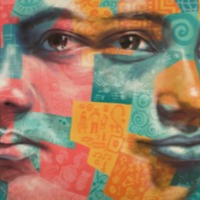
Mark
Despite having the lowest regional prevalence of modern slavery in the world, Europe remains a destination, and to a lesser extent, a source region for the exploitation of men, women and children in forced labour and commercial sexual exploitation. According to the most recent Eurostat findings, European Union (EU) citizens account for 65 percent of identified trafficked victims within Europe. These individuals mostly originate from Eastern Europe, including Romania, Bulgaria, Lithuania and Slovakia. Mark Ovenden is a survivor of modern slavery. In an interview with the BBC, he recounts how he was offered accommodation and employment just outside his hometown in Southern England. At the time – Sept. 2009 – he had no job and was eating out of soup kitchens, so he jumped at the chance to earn some money. But things did not turn out as Ovenden expected. Between Sept. 2009 and April 2010, he moved with the family to different areas in the U.K., Holland and Sweden where he was forced to work for either no money or minimal pay. The work – taking up and laying driveways – was physical, repetitive and generally involved labouring for long hours. Ovenden, who said he had no support network of friends or family at the time, soon became completely dependent on his bosses.
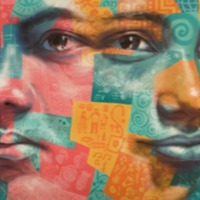
Hakim
India has a population of more than 1.3 billion people, there are still at least 270 million people living on less than US$1.90 per day. While laws, systems and attitudes regarding key 'fault lines' such as the caste system, gender and feudalism are rapidly changing, social change of this depth and scale necessarily takes time. In this context, it is perhaps unsurprising that existing research suggests that all forms of modern slavery continue to exist in India, including intergenerational bonded labour, forced child labour, commercial sexual exploitation, forced begging, forced recruitment into nonstate armed groups and forced marriage. Hakim describes the inter-generational nature of the kind of bonded labour he is subject to, having entered this kind of slavery as a small child when his father became bonded. He worries that if he stays in bonded labour that his children will be forced to do the same, and expresses a hope that he can pay off the contractor’s debt so that his children can get an education.
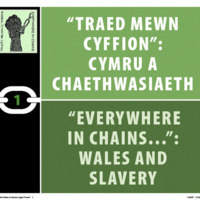
Everywhere in Chains: Wales and Slavery
Everywhere in Chains was an umbrella project created for the bicentenary commemorations in 2007, by a collaboration between Amgueddfa Cymru - National Museum Wales, the National Library of Wales, University of Wales, Bangor and CyMAL: Museum Archives and Libraries Wales (part of the Welsh Assembly Government). An exhibition explored Welsh involvement in slavery, especially focusing on the transatlantic slave trade and its abolition, the Black presence in Wales, and legacies of slavery. This was shown at the National Waterfront Museum in Swansea from May to November 2007 before touring to Wrexham County Borough Museum. The touring version of the exhibition was funded by the Welsh Assembly Government. The exhibition in Wrexham included discussion of the painting 'A Negro Coachboy', thought to commemorate a black servant of John Meller, owner of the Erddig estate in the 18th century.
Alongside the exhibition, the Everywhere in Chains programme also included lectures, formal learning activities and performances. An educational pack was produced by CyMAL and distributed to every school in Wales in 2009-2010. A community project created a forum in which participants from many cultural backgrounds could voice their ideas about enslavement. The Everywhere in Chains Community Heritage Toolkit captured the learning from this project. The toolkit, launched in 2009, was produced to help individuals, groups and organisations to work with culture and heritage providers to undertake projects focused on the role of Wales in the transatlantic slave trade and issues of modern slavery.
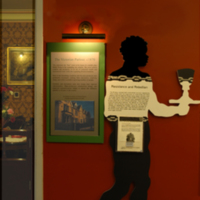
Unfair Trade
York Castle Museum's Unfair Trade exhibition used the museum's collections to explore slavery from the viewpoint of ordinary people, and how consumption of slave-produced everyday commodities - sugar, tea, coffee, cocoa - contributed to the slave trade. It also looked at the part played by York in the abolition of the slave trade and slavery, with the many Quakers of the city supporting William Wilberforce and helping to finance his election campaign. The exhibition continued the focus on consumption into modern life by asking visitors to consider where the products they buy come from. York Castle Museum features a recreated Victorian street, Kirkgate, with its own newspaper, 'The Kirkgate Examiner'. A special edition was distributed to coincide with the exhibition.
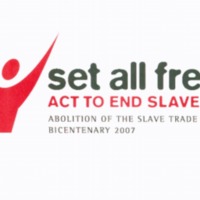
Set All Free: ACT TO END SLAVERY
Set All Free: ACT TO END SLAVERY was a project of Churches Together in England, based in London. It was also a collaboration between church-related groups, societies and organisations around the UK working together with a Christian ethos to assess the relevance of the bicentenary, and in particular the legacies of slavery. The project aimed to highlight how the values of the abolitionists can transform relationships on an individual, community and society level. The project included building a network coalition, campaigning, producing research and resources for churches, schools and individuals. Set All Free also worked closely with Anti-Slavery International and Rendezvous of Victory, a leading African community-led organisation.
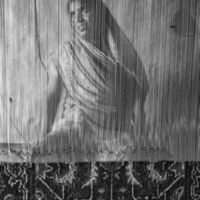
Modern Slavery, Indian Weaver
This image depicts 'Jadawati, a weaver, she is working on a 24 feet carpet which will take her nearly 40 days to complete. As a bonded labourer, she is paid 60 rupees a day, a rate nearly half the minimum wages entitled to her as per the law. The carpet that might sell for 25,000 rupees or more will have earned Jadawati less than 2,500.' The composition of the image gestures towards a sense of imprisonment; the woman is visible behind the fabric weave which acts as an intricate prison. As the rug fabric moves towards completion the figure of Jadawati slowly disappears behind the pattern, as the object of consumption obscures the human cost of production.
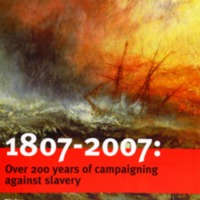
Anti-Slavery International, 2007
The world's oldest human rights organisation, Anti-Slavery International, led several initiatives in response to the bicentenary. The Fight for Freedom 1807-2007 Campaign, launched in 2005, called for measures to address the continuing legacies of the slave trade. The publication '1807-2007: Over 200 years of campaigning against slavery' looked back at the work of Anti-Slavery International and its predecessor organisations. The Spotlight on Slavery series of exhibitions and events included debates, lectures, film screenings and photography exhibitions. Anti-Slavery International also collaborated with a number of other organisations and projects in 2007, including Rendezvous of Victory and Set All Free, and contributed exhibition material to various exhibitions around the UK, including the Remembering Slavery exhibition at the Discovery Museum in Newcastle.